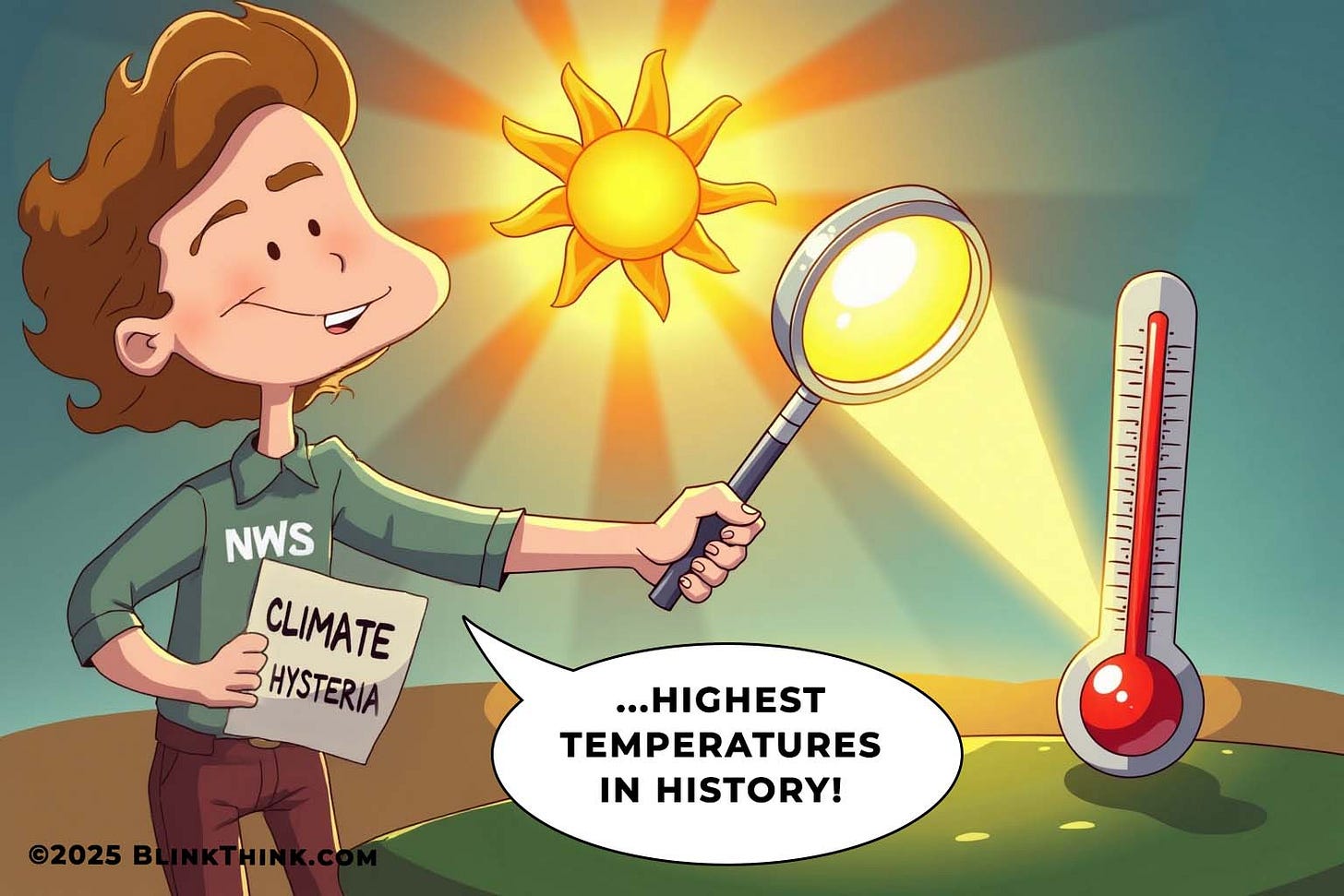Recently, the various weather services issued warnings about unprecedented heat expected in Central Texas in the coming week.
“105 degrees” - “Never been this hot this early” - “Nothing like it before”
Local weather forecasters and the National Weather Service (NWS) issued heat advisories warning that it would be unsafe to hike, bike, or run. (I’m unsure what temperature would be safe to hike in, but not bike in.)
The high temperature for that predicted doom-week was actually 98 degrees, not 105 degrees. Nothing abnormal for mid-May in Texas.
Since humans are wired to notice warnings and remember bad news, if you ask somebody this week, they’ll tell you that last week was, “105. The hottest we’ve seen.” That’s because our built-in primacy bias makes us remember the 105-degree warning that we saw first, not the actual temperature.
The weather service gathers data from weather monitoring stations across the country. A large percentage of these stations are broken, old, uncalibrated, located erroneously, or just plain missing.
One big problem with many of the stations is that they are placed on or near concrete and asphalt surfaces in direct sunlight - totally against NWS/NOAA guidelines.
These gauges will read hotter than ambient, and for longer. Despite plenty of people bringing these misplaced stations to NWS’s attention, our government still publishes the exaggerated readings.
Many stations are broken or non-existent. The NWS admits that they often simply average other stations’ numbers or just fabricate a number as the analyst sees fit for any station that is missing or broken.
What better way to further the climate hysteria agenda than to just fabricate the numbers that you need to see?
An old media maxim - “if it bleeds, it leads” - also applies to weather agencies. They must be alarmist to stay relevant and keep eyeballs on screens.


